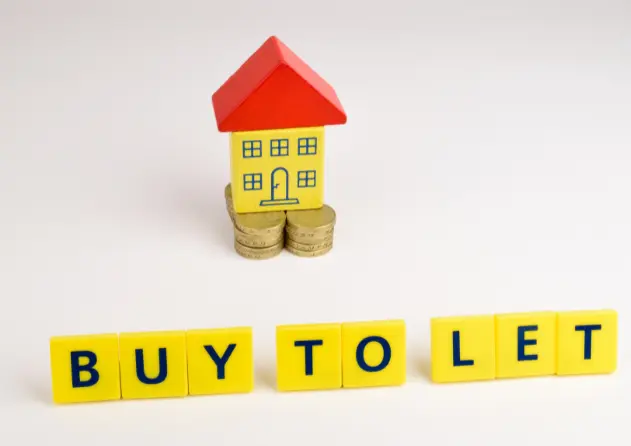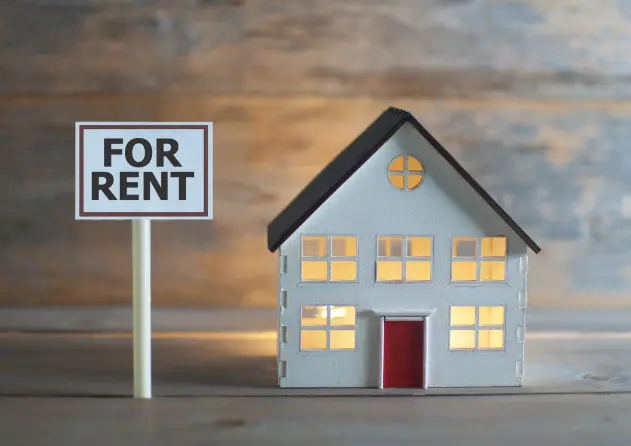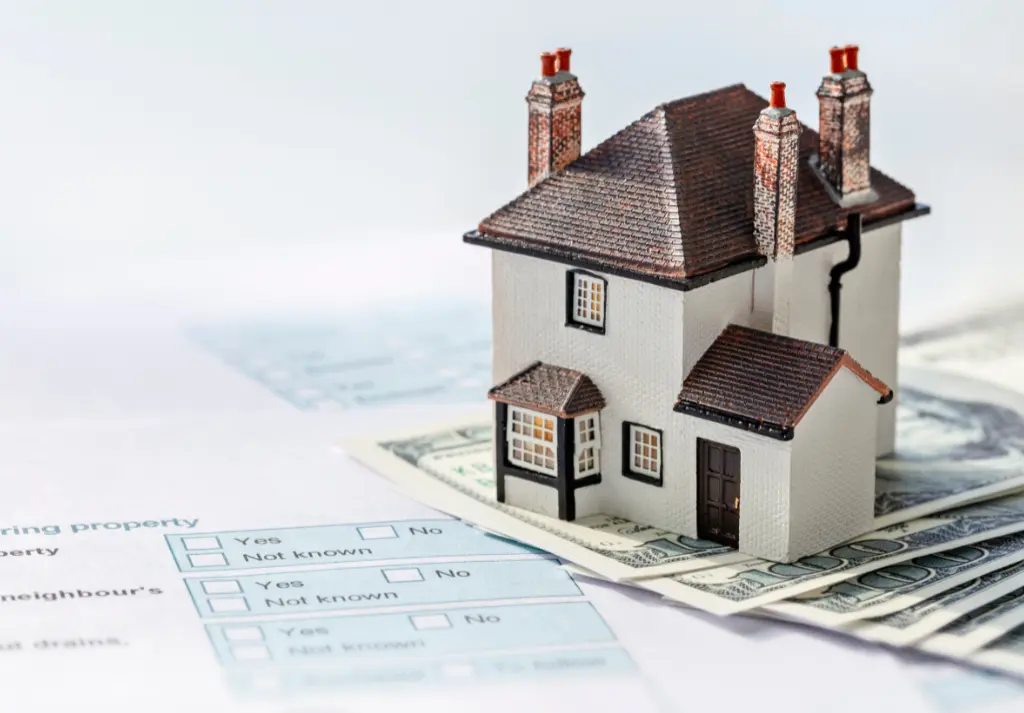Property investing has become an attractive option for many looking to build wealth and secure their financial future. According to recent surveys, over 50% of UK property investors will still consider real estate regardless of the economy.For those looking to get started in property with £50,000 in initial capital, the opportunities to build a robust portfolio are plentiful. Following extensive research of the property market, the API Global team outlines the 7 best ways to invest £50K in property. But before diving in, let’s explore the 2 main goals of property investment.
Setting the Investment Goals: Capital Gains & Rental Income
For investors looking for how to invest £50K in property, the primary financial goals here should be achieving capital gains through property price appreciation over time, as well as generating rental income. According to research done by the experts at API Global, UK house prices have risen by about 20% in the last 5 years and are predicted to rise even further (1, 2). Investing in up-and-coming UK property areas exhibiting strong growth and demand is a good way to maximise returns.
Areas in regional cities outside of London, such as Manchester, Liverpool, Leeds, and Birmingham, are attracting more investment due to lower property prices and higher rental demand from students and young professionals. New regeneration projects and infrastructure improvements are also driving up values in these locations. For buy-to-let investments, aim for young professional accommodation, which typically achieves higher rental yields of 5–9%.
Ideally, a mix of capital growth and income-generating assets will help mitigate risk. With £50K, investors can consider using a buy-to-let mortgage to finance up to 80% of the portfolio value. However, the key to success is working with a financial adviser who partners with a reputable property investment expert to identify suitable opportunities and manage the end-to-end purchase and rental process.

Building a £50K property portfolio requires careful planning and professional guidance to set the right investment goals, but what are the available investment options here? Let’s explore them.
How to Build a Property Portfolio With £50K: 7 Methods
There are several ways of building a property portfolio with £50K, including:
- Buy-to-let investment
- Property flipping
- Rent-to-rent
- House hacking
- Serviced accommodation
- Real estate investment trusts (REITs)
- Property development
Based on the research done by the property investment experts at API Global, the best way to invest £50K in the UK is to purchase a buy-to-let property. The £50K can account for the 20% downpayment required to initiate a property investment, and the rest of the property value may be financed via other means, such as a mortgage.
Now, let’s analyse each option in more detail.
1. Buy-to-Let Investment
For those with £50K investment capital, buying buy-to-let properties is the best option to generate monthly cash flow and long-term capital gains. Here you will find a very useful list of the best buy to let areas in Liverpool.
Investors can use the £50K as a 20% down payment on a £250,000 property (or less) and may choose to take out a buy-to-let mortgage for the remaining amount. This option also allows enough capital to be left for other unforeseen expenses; the key is to buy a property within the £150–200K value. And since buy-to-let property developments in fast-growing areas generally generate consistent rental income, paying back the mortgage shouldn’t be a problem.
There is also the benefit of capital gains. Historically, properties have always appreciated over time, and by the time the mortgage on the property has been paid off (remember, with the income generated from renting out the property), it will be sold off at a profit. This way, investors can use the profit to invest in more properties using a similar approach, and when done right, there are also some tax-free benefits.

For the best return, investors should consult their wealth manager. They are in the best position to source properties that will generate a decent annual rental yield, ensuring good cash flow to pay off the mortgage.
By purchasing the right buy-to-let property, holding it for the long term, and reinvesting profits to expand their portfolio, investors can build substantial wealth and passive income over time. With the potential for solid rental yields and capital appreciation in key UK cities, investing £50K in property can go a long way.
2. Property Flipping
Property flipping involves purchasing an undervalued property, renovating it, and then selling it for a profit. For investors looking for how to invest £50,000, property flipping can be an attractive investment strategy to build a property portfolio.
Here are the 4 key steps involved:
- Finding undervalued properties
- Financing the deal
- Managing the renovation
- Maximising the sale price
a. Finding Undervalued Properties
The key to a successful flip is sourcing a property with the potential for capital appreciation.
Investors should look for properties in up-and-coming neighbourhoods with strong demand and limited supply. Properties that require light cosmetic renovations, such as a new kitchen or bathroom, often have the most potential for a profitable flip. Sites like Zoopla and Rightmove can help investors identify undervalued properties and see recent selling prices of comparable properties.
b. Financing the Deal
With £50,000 in capital, investors will likely need an extra source of funding—like a mortgage—to finance the remainder of the property purchase.
Lenders view flips differently (riskier) than standard buy-to-let mortgages and may charge higher interest rates. Hence, investors should aim for short-term mortgages to reduce interest rates. Investors will also need a credible renovation plan to secure financing.
However, given the risk and complexities involved, the process of obtaining a mortgage to flip a property may be confusing for many.
c. Managing the Renovation
The renovation stage is where profit potential can be gained or lost. Investors should get multiple contractor bids for all projects and budget a 10–20% buffer for unexpected costs. Note that permits may be required for structural or electrical work. Finally, hiring trusted project managers can help keep renovations on schedule and budget.
d. Maximising the Sale Price
With a polished new kitchen, an updated bathroom, refreshed paint, and decluttering, a formerly undervalued property can sell for 20–50% more than the purchase price. To increase prospective bids, investors should take professional photos, list the property on major property websites, and set the asking price at the higher end of the property’s valuation range. Although getting enough profits to cover the mortgage costs can be challenging, with a solid strategy, it is possible.
The property flipping strategy, while at higher risk than the standard buy-to-let approach, gives investors a path to build their investment portfolio and generate profits to put toward future deals. With a meticulous approach to finding, financing, and flipping properties, investors can build wealth over the long run through real estate.
3. Rent-to-Rent

Rent-to-rent, also known as lease arbitrage, is a popular strategy for those looking for how to invest £50K in the UK. With this approach, the investor rents a property from a landlord and then sublets it to tenants at a higher rental rate, pocketing the difference as profit. This allows the investor to control a property without purchasing it outright and can often be seen on Airbnb.
How to Invest via a Rent-to-Rent Model
For the rent-to-rent model, the experts at API Global recommend targeting new-build properties in up-and-coming areas showing strong signs of growth and development. Investors can find good deals on properties in these neighbourhoods that they can then rent out at a premium due to increasing demand. For example, a 2-bedroom apartment rented for £800 per month could potentially be sublet for £1,200 or more per month in a gentrifying area.
To make rent-to-rent work, investors must find properties where the rent charged to subtenants significantly exceeds the rent paid to the landlord. A good rule of thumb is that the sublet rent should be at least 25–30% higher than the cost of the head lease to generate an adequate profit margin. Investors will also need to properly screen subtenants, draft solid lease agreements, and budget for any periods of vacancy or non-payment of rent.
With £50K, an investor could put down deposits on multiple rent-to-rent properties to build a portfolio. While more hands-on than other strategies, rent-to-rent can be an excellent way for investors with limited capital to get into property investment and start generating returns.
Investors should note that rent-to-rent does come with risks, like subtenants damaging the property or defaulting on rent. However, for investors trying to build a property portfolio without a large upfront capital outlay, the rewards of rent-to-rent can outweigh the risks when proper due diligence is exercised. With some experience, investors can build a robust portfolio of rent-to-rent properties without investment risk while generating consistent and meaningful returns.
4. House Hacking
House hacking is one of the best investments with £50K for those who have inherited a property with large room space. This strategy involves partitioning the inherited property and renovating the segmented area to enhance its rental appeal.
To illustrate, an investor who has inherited a property can utilise £50,000 to refurbish a portion of the house, subsequently increasing its rental value. The renovated area could be rented out, generating a steady stream of income.
The benefits of this strategy include reduced housing costs, as the rental income can cover maintenance expenses, and the ability to build equity in a tangible asset. However, potential risks such as dealing with tenants, incurring property damage costs, and navigating market fluctuations should be considered.
Despite these challenges, for investors who have inherited a property and have a budget of around £50,000, house hacking could be a smart and viable real estate investment strategy.
5. Serviced Accommodation
Serviced accommodation is one of the best ways to invest £50K in the UK. According to our research at API Global, the UK serviced apartment sector was projected to have grown by over 27,000 units at the end of 2022 and is expected to continue growing at an average of 5.7%.
But what exactly does services accommodation entail, and how can investors go about this property investment strategy? Let’s find out below!
What Is Serviced Accommodation?
Serviced accommodation refers to furnished apartments or houses let out for short-term rentals, typically to business travellers, tourists, or contractors working away from home. Investors in serviced accommodation take on more risk but can achieve significantly higher returns. The higher yields are possible because serviced accommodation demands higher nightly rates.

Unlike buy-to-let, where tenants spend several months and maintain the property well, occupancy rates are lower for serviced accommodation. Also, the occupant may not show proper care for the property. Hence, the maintenance cost of serviced apartments can deeply cut into the profits; lower occupancy also means reduced turnover in comparison to buy-to-let property investments.
Finding and Preparing a Property
The key to success with serviced accommodation is locating a property in an area where there is high demand for short-term rentals, such as near major transport hubs, tourist attractions, hospitals or business districts. Investors should look for a 2–3 bedroom apartment or house that can be converted into an “aparthotel” style suite.
Investors will need to invest in high-quality furnishings, linens, televisions, WiFi, and other amenities to meet the standards of business and leisure travellers. So, in addition to obtaining extra funding to buy the property—such as a mortgage—an investor will typically need more funds to furnish it. All these make this option a riskier endeavour, but it’s profitable with the right strategy.
6. Real Estate Investment Trusts (REITs)
REITs offer those who wish to know what to do with 50,000 pounds the opportunity to invest in property without the responsibility of direct ownership and management. REITs are companies that own and operate real estate and allow individual investors to buy shares.
There are 2 main types of REITs: equity REITs, which own and operate properties, and mortgage REITs, which invest in mortgages and mortgage-backed securities.
Equity REITs
These generate revenue through the collection of rent on their properties. Investors can earn returns through share price appreciation and dividends. As the properties increase in value over time, the share price also tends to rise.
REITs are required to pay out at least 90% of their taxable income as dividends to shareholders annually. This results in relatively high dividend yields.
Mortgage REITs
These earn interest from the mortgages and mortgage-backed securities (MBS) they hold. Their revenues come from the interest payments on the mortgages. Mortgage REITs also usually pay out most of their earnings as dividends. They do carry more risk, though, as mortgage defaults can negatively impact earnings and share prices.
Pros of REITs
REITs provide several benefits to investors, including the following:
- They offer high liquidity since the shares trade on public exchanges like stocks.
- They provide diversification since the value of the properties and mortgages they hold are not directly tied to the overall stock market.
- REITs allow small investors to gain access to commercial real estate, an asset class that was traditionally only available to large institutions and high-net-worth investors.
Cons of REITs
However, there are also risks to consider with REITs, as we’ll see below:
- Share prices can drop if the value of the underlying properties or mortgages declines.
- REITs carry interest rate risk; if rates rise significantly, the value of properties and mortgages can fall.
- REIT dividends are not guaranteed and can be cut if earnings drop. Hence, investors should do thorough research on the REIT’s holdings and financials before investing.
Furthermore, the goal of every investor is to own a property that appreciates in value over time, in addition to generating consistent revenue from rental income. REITs don’t offer these benefits — investors don’t own the properties they invest in, and in case the market crashes, they have nothing to fall back to. So, for investors with £50K, we recommend investing in buy-to-let property developments due to the stability they offer.
7. Property Development
Property development can be a lucrative pathway for investors looking for the best way to invest £50K in property. This strategy typically involves the purchase of land using part of the available funds, with the aim of either developing the land over time or holding onto it until its value appreciates.
While it might take a while for the land to appreciate in value, this approach can yield significant returns for patient investors. Also, lands with unfinished projects often have a higher value than empty plots, offering the potential for increased profits.
Property Development vs. Buy-to-Let Investment
Again, while property development can be rewarding, it’s not the quickest way to see returns. For those wanting a more immediate return on their investment, buy-to-let properties may be a more suitable option. The £50,000 could be used as a 20% down payment on a buy-to-let property development, providing access to bigger properties and potentially larger returns.
Although rental income will likely be utilised for mortgage repayments, the real benefit comes in the form of property appreciation. Over time, as the property increases in value, the investor can expect to see substantial returns on their initial investment. This demonstrates that building a property portfolio with £50,000 is not only feasible but can also be highly profitable. However, the success lies mainly in the location of the property, and the next section talks about how to select a location with great return potential.
Where to Invest £50K in the UK for Maximum Returns
Going by the above options, investing in property with £50K is feasible and is a proven way to generate strong returns over the long run. However, for investors looking to build a profitable property portfolio, the best places to invest in the UK are areas experiencing regeneration and infrastructure improvements. These often present opportunities for significant capital growth, and we’ll see why below.
Up-and-Coming Areas
Up-and-coming areas, especially those undergoing urban regeneration, often offer the best potential for price growth. Places like Manchester, Liverpool, and Birmingham have seen property values rise significantly over the last 5 years due to improved infrastructure. Within these cities, neighbourhoods close to new businesses or technology hubs tend to perform particularly well.
Investors should also consider university towns, where demand for student housing and young professional accommodation is typically high. Cities with strong tourism appeal, such as York, Bath, and Brighton, also remain attractive, as vacation rentals and short-term lets can provide strong rental returns.
Areas With Improved Transport
Areas benefitting from new or improved transport infrastructure often see a subsequent increase in property prices. The arrival of a new railway station, tramline or motorway junction can significantly reduce commute times and open up an area for development. This may spur new homebuilding, as well as attract businesses and amenities to the area.
For example, property values along the route of the new Crossrail train line in London rose by up to 73% between 2012 and 2021. Other towns and cities across the UK, including Reading, Birmingham, Manchester, and Edinburgh, are also good transit routes that may see improved transport infrastructure in the coming years. Investing in areas poised to benefit from these transport improvements could yield sizeable returns.

In summary, for investors looking to build a £50,000 property portfolio, focusing on up-and-coming areas, especially those benefitting from urban regeneration or new transport links, offers the potential for sustained capital growth and strong rental yields. However, to ensure investors select areas with long-term price appreciation and demand from tenants, we recommend speaking to a wealth manager for careful research and analysis.
Frequently Asked Questions
Is £50K enough to invest in property?
Yes, £50,000 is enough to invest in property, only as a downpayment; investors will need an extra source of funding—such as a mortgage—to cover the remainder. This sum provides a solid foundation for potential landlords to embark on a profitable investment journey, and with each win, they can grow their portfolio. While investing £50K in property can offer rental income and capital gain benefits in the long term, investors should do their due diligence, evaluate the income tax, expenses and responsibilities, and consult their financial advisers for guidance.
How to invest £50K in UK property?
Investing £50,000 in UK property involves a few crucial steps, as outlined below:
- Firstly, investors should consider buy-to-let property developments.
- Secondly, selecting an ideal location is crucial.
- Thirdly, thorough research examining capital growth and rental yields of the location is necessary.
- Lastly, consulting with financial advisers can provide valuable guidance and resources.
Where is the best place to invest £50K?
The best place to invest £50K is in property. However, there are several property investment options to consider depending on one’s risk tolerance and financial priorities. We recommend consulting with a financial advisor prior to making any investment. Investors may also consider investment accounts, savings accounts, index funds, money market funds, or mutual funds.
Where can I buy a house for £50K in the UK?
Investors can buy a house with a starting budget of £50K in UK areas like Birmingham, Liverpool, Manchester, and Nottingham. However, note that this amount may only cover the downpayment and some other minimal expenses; investors may need to consider extra funding sources like a mortgage to complete the payment. This is a great property way to invest at API Global, where the initial downpayment is 20% of the total property value — we suggest investors contact their wealth manager for more information.
Conclusion
While we recommend buy-to-let investment as the best way to invest £50K in property, investors should consider their long-term financial goals before committing to any investment. In all, focusing on areas with strong fundamentals and following sound advice from local property experts is key.
With property prices rising steadily over the long term, real estate remains one of the most attractive asset classes for investors seeking passive income and capital gains. For those willing to take calculated risks, the high-growth areas discussed in this guide could lead to significant returns on investment over the coming years. Investors should contact their wealth manager to get started today.
Disclaimer: Any information API Global provides does not constitute financial advice and is for educational purposes only.


